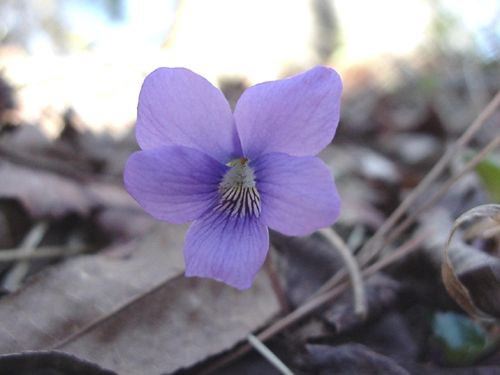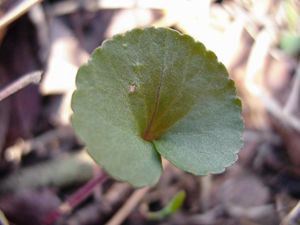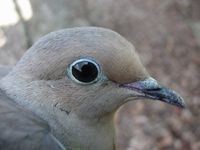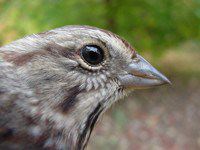 HOME: www.hiltonpond.org |
|
||
|
|
|||
|
|
|||
|
|
|||
|
|
|||
|
|
|||
|
THIS WEEK at HILTON POND |
|
There's amazing diversity of flora and fauna at Hilton Pond Center, but something that's sadly lacking is spring wildflowers. The woods on an adjoining farm have lovely stands of Liverleaf (Hepatica), Bloodroot, Trout Lily, and other early spring blossoms . . . but only in areas that are fenced and off-limits to grazing cattle. In our judgment, the one shortcoming of Hilton Pond Center comes precisely because its agricultural heritage is truly representative of the Carolina Piedmont--i.e., at least a century of timbering, row crops, and cows--so the property lacks many native plant species that were locally plentiful in pre-European days.  That's why on one of these recent blustery March afternoons, we were pleased to find a plant a' bloomin' brightly below the dam that forms Hilton Pond. For some folks, the discovery of solitary Blue Violet along the trail might not seem like much, but we take great pleasure from small blessings such as this. Violets (Viola spp.) are among the most widely distributed wildflowers in North America; the Manual of the Vascular Flora of the Carolinas (Radford 1968) lists 28 species and a number of varieties for those two states alone. There may be as many as 500 species of Viola in temperate regions worldwide.
Foliage of violets is highly variable. Leaves on many species are ruffled and heart-shaped (above right), but some have a leaf that is shield-like or even deeply serrated and reminiscent of a bird's foot.  To be honest, we're still working on identifying the Blue Violet that brightened the week at Hilton Pond Center, so it may turn out to be an introduced species rather than a local wildflower. After all, the most familiar violet in America isn't a native species but a cultivated cross between several European types. Thriving in flower boxes and foundation plantings, that Viola is none other than . . . the Pansy. If you enjoy "This Week at Hilton Pond," please help Support Hilton Pond Center for Piedmont Natural History |
 Violet taxonomy is complicated because in many species there are two flowers types, a showy but sterile bloom that appears in spring, followed in summer by one that has no petals. The latter is cleistogamous (non-opening and self- pollinating) and capable of producing many seeds, sometimes explosively. Depending on species, the showy flower may be blue, yellow, or white--or even violet!--and the distinctive blossoms always show five petals, the lower one having a spur.
Violet taxonomy is complicated because in many species there are two flowers types, a showy but sterile bloom that appears in spring, followed in summer by one that has no petals. The latter is cleistogamous (non-opening and self- pollinating) and capable of producing many seeds, sometimes explosively. Depending on species, the showy flower may be blue, yellow, or white--or even violet!--and the distinctive blossoms always show five petals, the lower one having a spur.




